DENTOALVEOLAR SURGERY
Dentoalveolar surgery is the surgical treatment of disorders of the teeth and their supporting hard and soft tissues.
Surgical removal of teeth (extraction)– seriously decayed, infected or broken teeth may require referral to a specialist in oral and maxillofacial surgery for removal. Patients may also require referral because their medical history can make tooth removal by a dentist more complicated, eg anticoagulation or previous treatment with bisphosphonates – drugs for osteoporosis/ breast cancer
Removal of impacted or ectopic teeth – teeth which have developed out of their normal position or lie at an unusual angle in the jaw can be considered impacted and/or ectopic. Removal of these teeth is often not straightforward. Wisdom teeth and canine teeth are the most commonly impacted/ectopic teeth requiring surgical removal.
Removal of developmental abnormalities of the teeth and jaws ─ these conditions include the development of extra (supernumerary) teeth and malformed teeth. Jaw bone abnormalities can include areas of additional bone formation (bony exostoses or tori) and abnormalities in bone development.
Removal of benign cysts of the jaw – a cyst is a pathological cavity within the jaws. There are several different types of jaw cysts. Treatment is usually surgical but is dependent on the actual type, site and size of cyst.
Removal of benign tumours – this involves the surgical management of non-malignant tumours of the jaws and soft tissues.
Pre-orthodontic surgery – in addition to the removal of impacted or ectopic teeth, which can interfere with the alignment of teeth when braces are used, ectopic or buried teeth can be uncovered by removing the overlying bone and gum tissue. The tooth can then be brought into a normal position using an orthodontic appliance e.g gold chain or bracket. This is a common procedure for canine teeth in the upper jaw.
Pre-prosthetic surgery – this refers to procedures enabling the construction and optimum function of dentures, bridges, crowns and dental implants. It can involve repositioning of the mucosal tissue to allow dentures to fit better or the placement of bone grafts to build up deficient areas of jaw bone.
Dental implants – these are threaded titanium fixtures which act to replace missing or absent teeth. They are surgically placed into the jaws in order to support an overlying crown, bridge or denture. Treatment is multidisciplinary and will be provided by a team comprised of oral and maxillofacial surgeons and restorative dentists.

